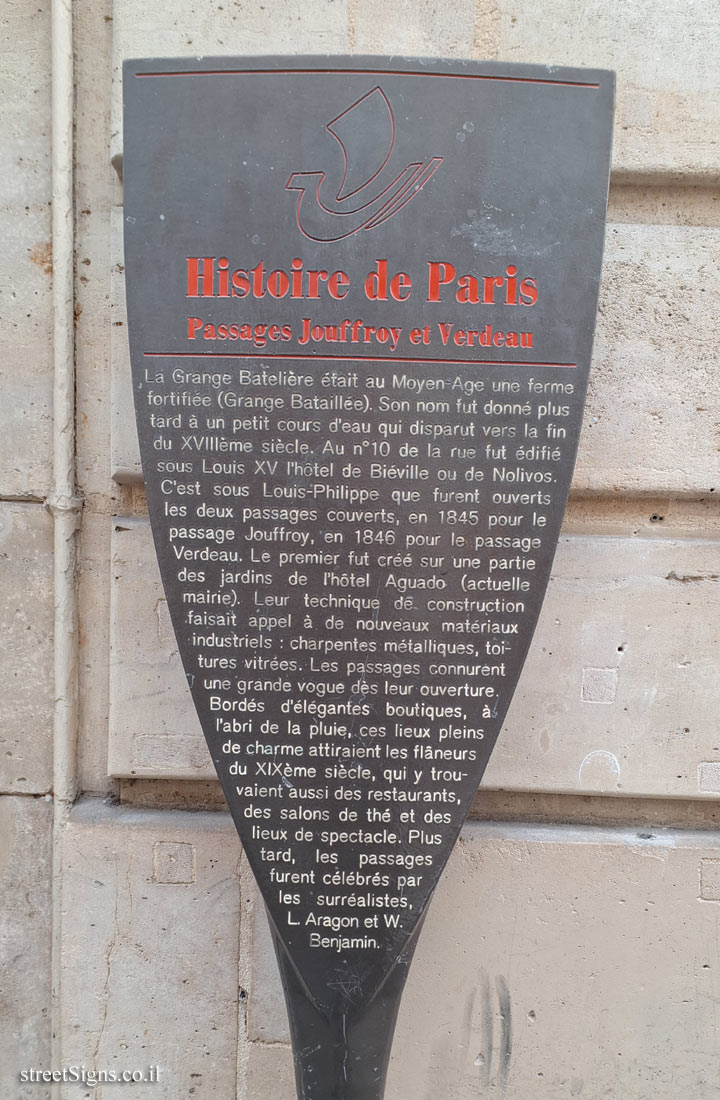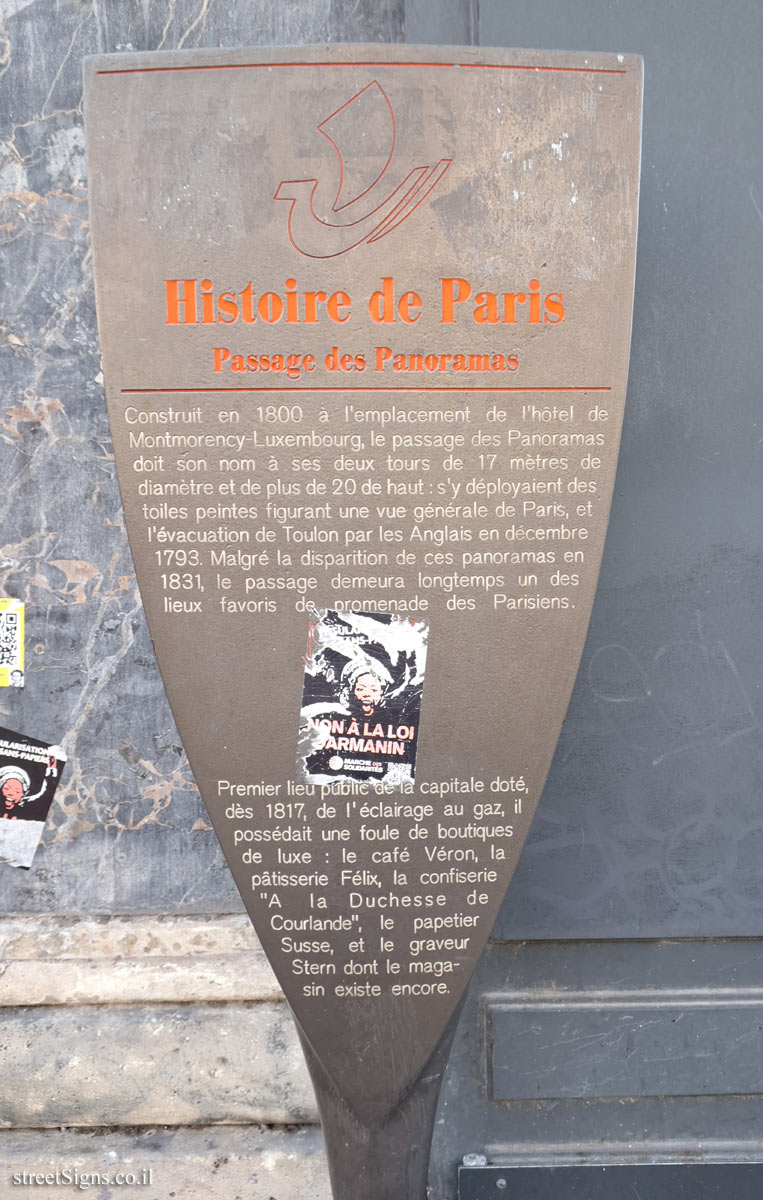One of the signs describing the history of the Paris Metro.
The sign at the Grands Boulevards station describes the passages of Paris, which can be reached by metro and some of them are located near the Grands Boulevards station.
The text refers to the images that appear on the sign, and that appear here in enlargement:
(1) The beginning of modern trade
 Click for a larger image
Click for a larger image (2)
Probably Passage des Panoramas
 Click for a larger image
Click for a larger image (3)
A stall selling clothes inside the Gare du Nord
 Click for a larger image
Click for a larger image In the background of the sign, one of the passages from the inside is photographed
At the bottom of the sign appears a map with the passages marked on it, and it is given here in enlargement
 Click for a larger image
Click for a larger image RATP - Régie Autonome des Transports Parisiens - Autonomous Parisian Transportation Administration
Translation of the text on the sign:
all of Paris under Paris
RATP logo
metro history (story)
discovering covered passages You can go to Cairo without leaving Paris. All you have to do is take one of the 17 covered passages that crisscross the center of the capital: an imaginary journey that will disorient even the most jaded! Born at the end of the 16th century, the passages enjoyed extraordinary fame in the 19th century. This is where modern commerce (1) was born: far from the muddy streets, traffic jams and bad weather, we discovered the latest displays of new products.
One of the first, built in 1798, the Cairo Passage owes its name to the Egyptomania which agitated the French, then under the shock of the Napoleonic campaigns. The design of the covered passages is reminiscent of the SOUKS, these alley markets that Westerners have just discovered in Egypt, with the pyramids, hieroglyphs and mummies.
The Passage des Panoramas, opened in 1800, owes its name to two rotundas from which panoramic views could be admired. In the 1820s, it was one of the busiest places in Paris. But little by little, the fashion is passing. The streets and boulevards, finally paved (2) and lit, offer a popular stroll, and the growth of department stores competes with small businesses. Finally, the metro, which reduces traffic jams, makes sidewalks passable again. However, Paris would not be what it is without its passages... Nor a visit to Paris without a ride on the metro, especially since you can also sometimes find basic necessities there! (3)
The covered passages of Paris
[map]
Passage Verdeau
 Click for sign's details
Click for sign's details Passage du Havre
Passage Puteaux
Madeleine Gallery
Passage of Panoramas
 Click for sign's details
Click for sign's details Vivienne Gallery
Passage Choiseul
 Click for sign's details
Click for sign's details Passage of the Pavilions
Vero-Dodat Gallery
Passage Jouffroy
 Click for sign's details
Click for sign's details Industry Passage
Passage of Desire
Brady Passage
Passage du Prado
Passage du Grand Cerf
Cairo Passage
Passage Colbert

 Click for a larger image
Click for a larger image  Click for a larger image
Click for a larger image  Click for a larger image
Click for a larger image  Click for a larger image
Click for a larger image  Click for sign's details
Click for sign's details  Click for sign's details
Click for sign's details  Click for sign's details
Click for sign's details  Click for sign's details
Click for sign's details  Click for all signs belonging to Paris - 100 Years of Metro History
Click for all signs belonging to Paris - 100 Years of Metro History
 471 Meter |
471 Meter |  540 Meter |
540 Meter |  540 Meter |
540 Meter |  1.34 Km |
1.34 Km |  2.15 Km
2.15 Km